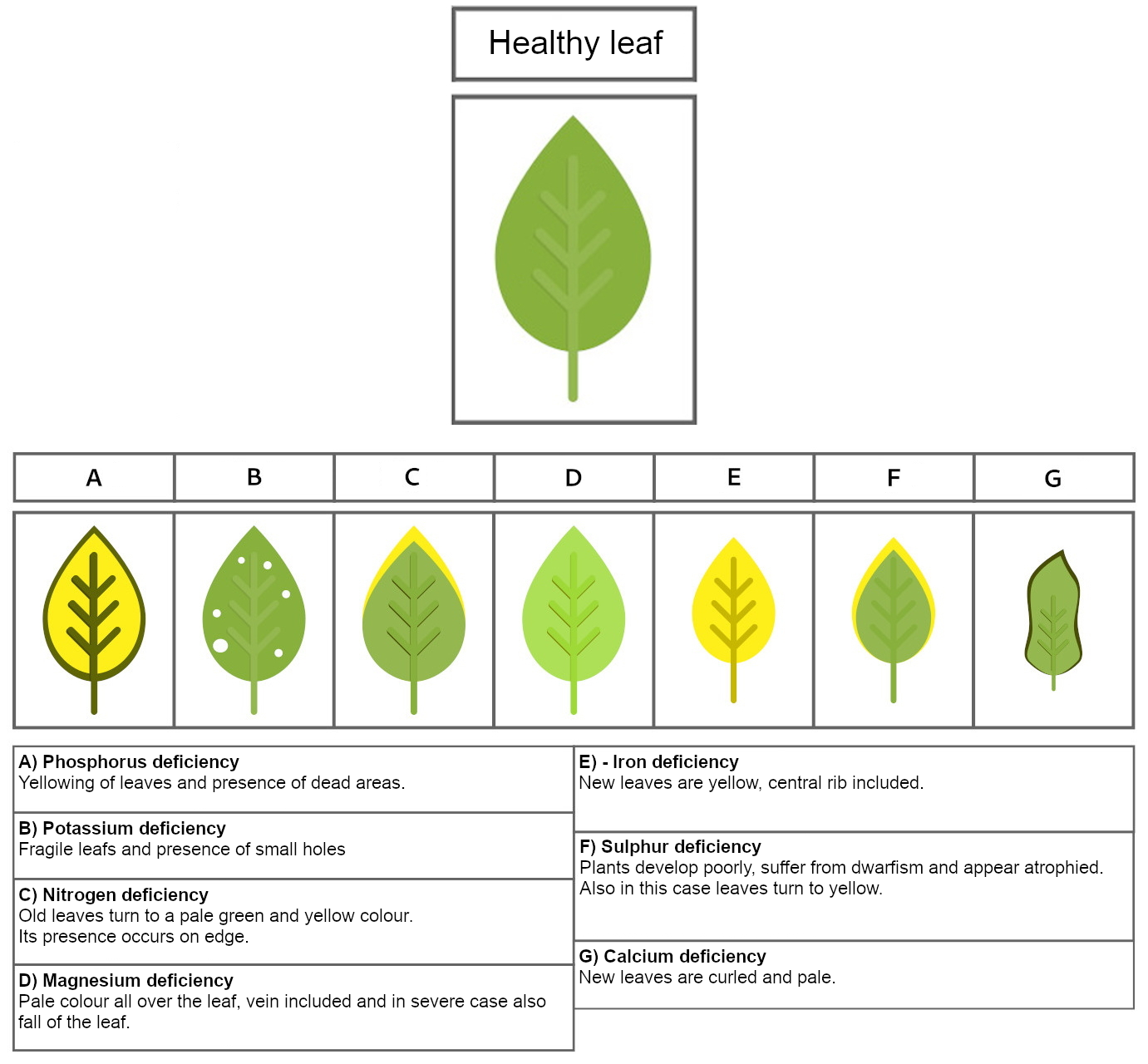Technical guidelines
The importance of nutrients and their deficiencies
Boron
Boron is a very important microelement, playing different roles in the physiological processes of the plant. Boron deficiency occurs on leaves, buds and inflorescences:
- leaves: in the medium and upper part of the buds, before flowering, light coloured, yellow areas with indistinct outlines are present in the internerval sectors; leaves do not grow and remain small, developing vein bubbles turning into internerval necrosis in severe cases;
- buds: internodes are short and in severe cases the growth of terminal meristems is causing the development of ramifications which give to buds a "broomstick aspect";
- flowering: boron deficiency is alterating the flowering and fertilization process; many not fertilized flowers are drying.
Boron deficiency is present especially on calcareous, light, irrigated and poor in organic substances soils. The excess of boron is causing symptoms similar to salinity effects: yellowing and drying of the tops, extended to young leaves starting from the edges.
Magnesium
Deficiency of magnesium (mobile element) in the plants occurs in the middle of the plant or in the lower leaves, reaching younger leaves. They yellow or whiten with dark green veins. Lower and middle leaves develop yellow sposts among dark green veins. The edges of the leaves are folding before the leaf falls. Plant may yellow in few weeks and in the most severe cases it turns completely white. Therefore the most serious risks are the following:
- Patchy chlorosis (starting from old leaves)
- Premature fall of oldest leaves
- Upward curling of foliar edges
Manganese
Deficiency of manganese (immobile element) is associated to the combined deficiency of iron and zinc and occurs in the internerval areas which are yellowing while veins remain green. Symptoms are affecting also older leaves. Necrosis areas could develop on the affected leaves that fall. Plant is whitered, growth is slow and tops are crinkled.
Excess of manganese occurs on new leaves and tops which develop an orange-rusty colour affecting then also old leaves. Growth is slow.
Molybdenum
Molybdenum is a micronutrient whose solubility is higher on alkaline soils and less on those with more acid pH. On legumes molybdenum deficiency occurs often as a nitrogen deficiency as the microelement is involved in its fixing. Deficiency may occur especially on sand, acid or highly moist or wet soils.
Deficiency effects are the following:
- Difficult growth of the plants and dwarfism
- Small, very thin yellow and spotted leaves
- Drying and deformation of leaf blades
- Limited production of pods for legumes

